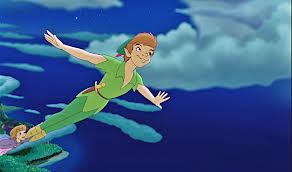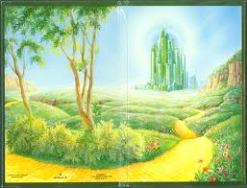 “Grown-up people find it very difficult to believe really wonderful things, unless they have what they call proof. But children will believe almost anything, and grown-ups know this. That is why they tell you that the earth is round like an orange, when you can see perfectly well that it is flat and lumpy; and why they say that the earth goes round the sun, when you can see for yourself any day that the sun gets up in the morning and goes to bed at night like a good sun as it is, and the earth knows its place, and lies as still as a mouse” (3).
“Grown-up people find it very difficult to believe really wonderful things, unless they have what they call proof. But children will believe almost anything, and grown-ups know this. That is why they tell you that the earth is round like an orange, when you can see perfectly well that it is flat and lumpy; and why they say that the earth goes round the sun, when you can see for yourself any day that the sun gets up in the morning and goes to bed at night like a good sun as it is, and the earth knows its place, and lies as still as a mouse” (3).
In this short passage found in Five Children and It, Edith Nesbit reveals one of the most undeniable truths about the construction of children and the basis of children’s literature. Through the omniscient voice of the narrator, Nesbit suggests that children are the only ones capable of believing the miracles contained within children’s literature and adults take advantage of this.
It is interesting to note that she speaks in second person to the child reader as someone who understands both the adult world and the children’s world wholly. Although it is obvious that Nesbit is an adult, she refuses to speak from the side of the “grown-up people.” This accomplishes two objectives.
First, Nesbit draws in the child reader and engages them personally by acknowledging that the child reader has certain knowledge that even adults lack. This is seen in the phrases “you can see perfectly well” and “you can see for yourself.” By making the child reader a “you,” Nesbit is addressing the entirety of the realm of children and gives the child reader a dimension of power over the adult realm because they can obviously see with their eyes the miracles that grown-ups fail to see. This is an interesting element of children’s literature that is not unique to Nesbit but can be found in the narrations of classic’s such as Water Babies and Peter Pan. Authors of children’s literature have utilized the second person effectively because it makes the child reader more interested and personally connected to the story. It enables them to feel like an important figure in the book. Nesbit makes use of this knowledge wonderfully in this passage.
The second point that Nesbit makes by making the narrator speak neither from the adults nor the children is allow the children’s negative energy to be directed away from the narrator and towards “adults.” Perhaps as a writer of children’s literature herself, Nesbit did not believe that she was secluded to the realm of grown-up people and thus did not suffer the same faults. Either way, by making the narrator a separate entity, Nesbit gains the child reader’s trust and becomes a creditable person. This paves the way for the rest of the book in which the child reader, already flattered from the narrator’s compliments, is more likely to believe the narrator’s comments and take them with a grain of salt.
A final interesting note about this passage is that Nesbit suggests that adults take advantage of the minds of children in the statement “children will believe almost anything, and grown-ups know this.” I believe that Nesbit was actually calling out writers of children’s literature and those adults who were in charge of deciding what was proper for children’s literature. I think this is evident in Nesbit’s utilization of an unorthodox magical wish-giving character the Sand-Fairy. Instead of following the example of the children’s literature authors before her, Nesbit created the image of the Sand-Fairy as a strange-looking, grumpy, and often unwilling character. Furthermore, her children are definitely not the image of perfection characteristic of the Victorian era. Instead, her child protagonists are more characteristic of children of the Edwardian era, which were represented as more raw-natured, mischievious, and trouble-making kids. As mentioned before, Nesbit as the narrator did not take her stand with the grown-up people because she felt they could not possibly be able to write for children the most effectively because they themselves could not believe the miracles that exist in their stories. For these reasons I think that Nesbit was making a jab at the adults involved in children’s literature.







